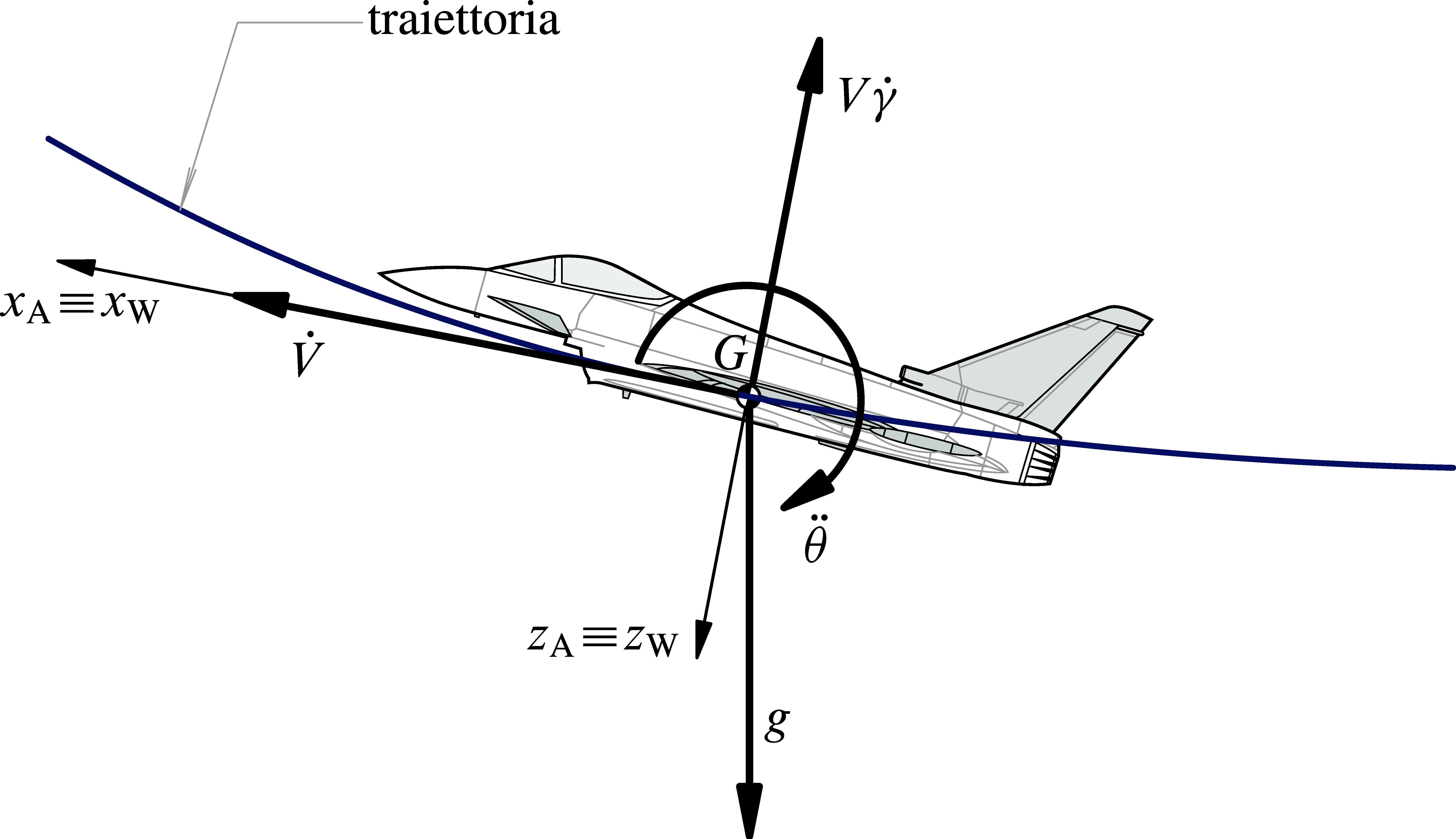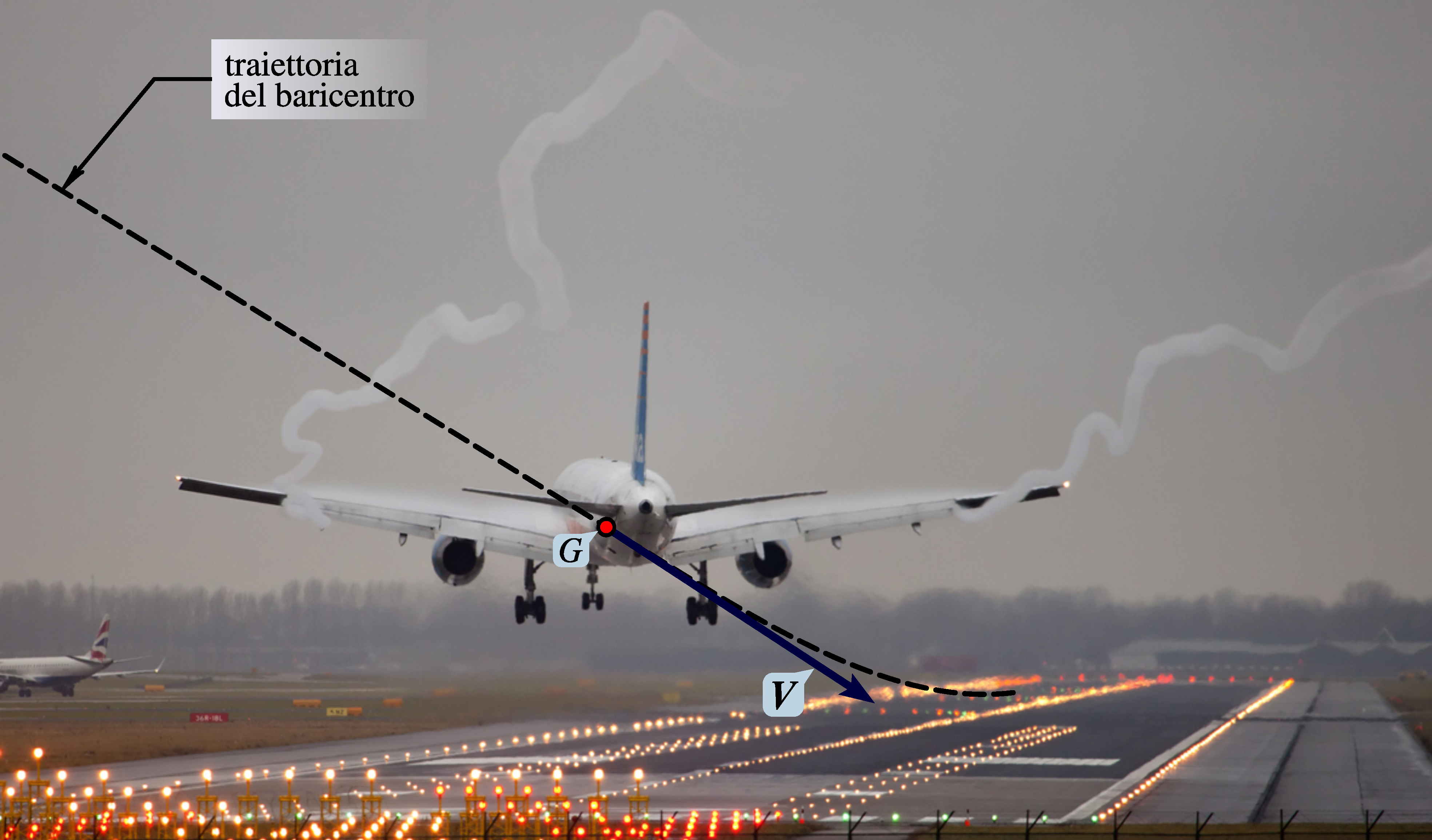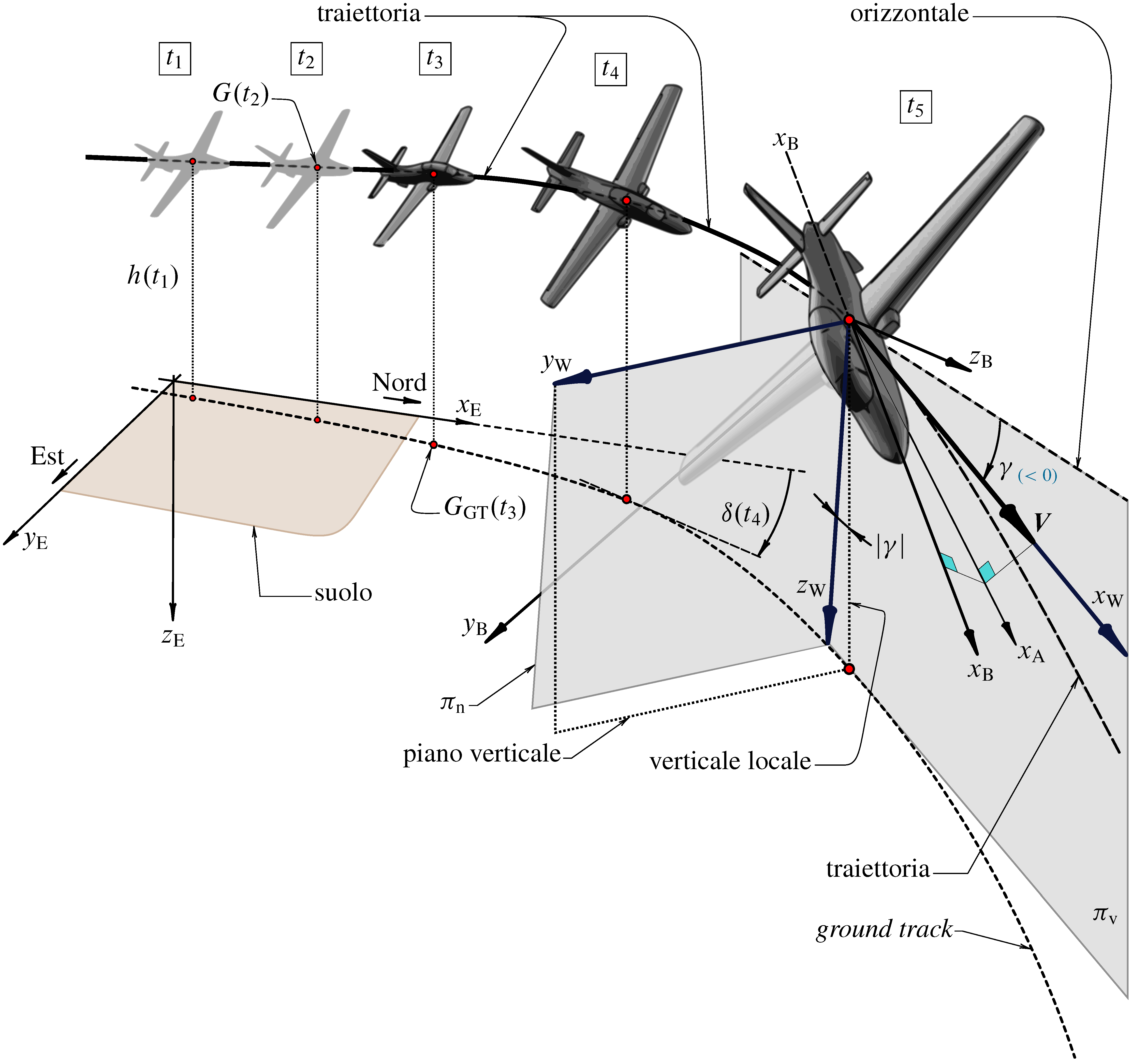Miscellanea
Dynamic aviation
Every aeronautical vehicle or device producing a lift or thrust force accelerates an amount of surrounding air in a downward and/or backward direction by exerting a force in that direction on it. According to Newton’s third law of motion (action = reaction), the aircraft experiences an equal opposite force, called lift $L$ or thrust $T$. If lift, for instance, which is typically directed upwards, has the same magnitude as the aircraft weight $W$, an equilibrium of forces, $W = L$, can be acquired for steady flight. A steady flight with a constant speed is reached when also the aerodynamic resistance $D$ at that speed, opposite to the flight direction, is equal to the produced thrust, $T = D$.
Conventional aircraft obtain their lift from a fixed lifting surface or aerofoil. If this is greater or smaller than the weight or inclined sideways, the direction of motion can be changed, making the aircraft manoeuvrable. Therefore, dynamic aviation encompasses the essential condition that there must be a continuous, downward flow of air around the aircraft.


